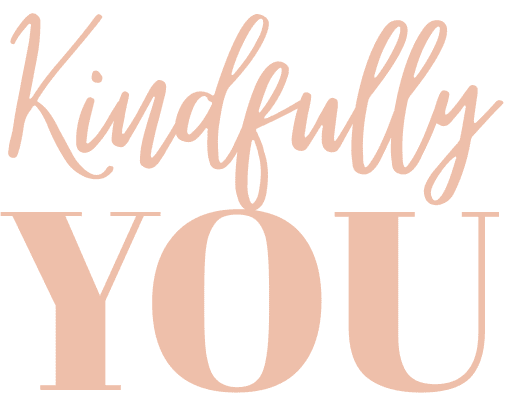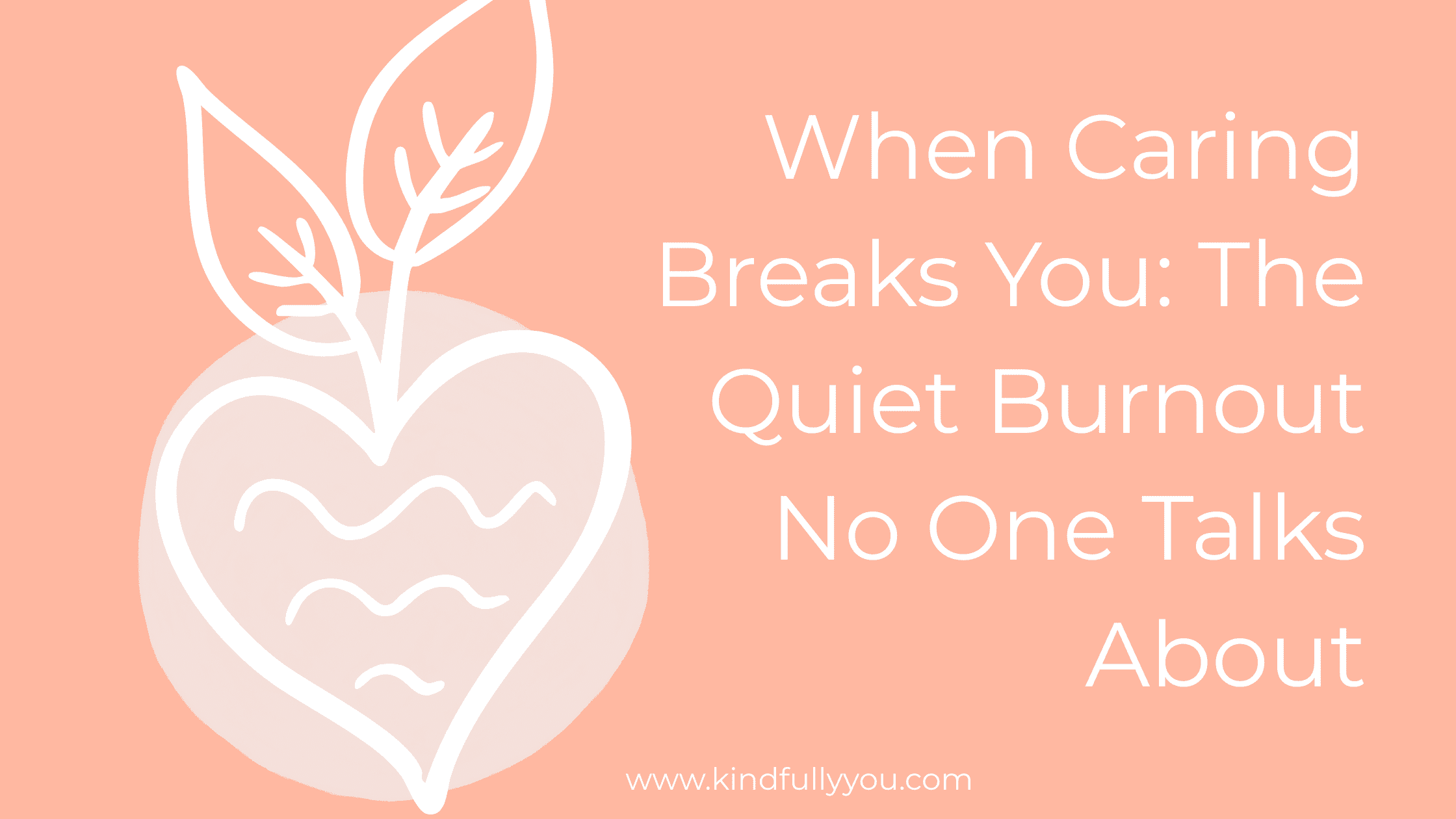When Caring Breaks You: The Quiet Burnout No One Talks About
I didn’t realise I was experiencing caregiver burnout at the time.
I just thought I was failing.
I was newly married, navigating perimenopause without realising it — and being told by doctors that I wasn’t. I was trying to build a business, living through lockdowns, and caring for my mum as she was dying of cancer. There was no training, no preparation, no real support. Just me, doing what I could and blaming myself when it wasn’t enough.
Even though I had mindfulness and emotional release practices that helped me cope, I eventually realised the emotional load was simply too much. No amount of self-care could undo the relentless pressure I was under — or the silence that surrounded it.
It wasn’t until much later — while reading Burnout: How to Manage Your Nervous System Before It Manages You by Dr Clare Plumley — that I began to see my experience through a lens that explained the complexities of what I’d been going through. It also offered something I hadn’t realised I needed: validation — of the harm and stress so many people are carrying, especially when they’re unsupported.
One section hit me particularly hard: the roles that increase vulnerability to burnout. It listed parenting, poorly managed workplaces, studying, being a leader, and being your own boss.
I’d add another to that list from my own experience: parents of children with additional needs.
But the one that made my eyes widen — the one that landed in my chest — was caring for others
That struck a deep chord. And from my own experience, reading this list felt like validation — not just of my own experience, but of the many women I’ve met since my mum passed away. Women who, like me, were quietly holding everything together while caring for elderly or terminally ill parents with little support. It confirmed what we already knew in our bones: that these roles take a toll, and that burnout doesn’t always look like collapse. Sometimes, it looks like coping — until you can’t anymore.
In this post, I want to share my story. Not for sympathy — but because I know I’m not the only one. And because I believe this conversation matters.
When Caring Breaks You: The Quiet Burnout No One Talks About
I didn’t realise I was burnt out at the time, Caregiver burnout was a real thing
I just thought I was failing.
I was newly married, going through the stress of lockdowns, caring for my mum as she was dying of cancer, and trying to build a business while being newly self-employed. I was also deep in perimenopause — but being told repeatedly by doctors that I wasn’t. I was exhausted, emotionally raw, and constantly doubting myself.
Even though I had some powerful mindfulness tools and emotional release practices, I slowly came to realise that the emotional load I was carrying was simply too much. No amount of journaling or stretching or deep breathing could undo the pressure I was under. The guilt. The fear. The sheer relentlessness of it.
Caregiver Burnout – The Roles That Make Us Vulnerable
It wasn’t until much later — while reading Burnout: How to Manage Your Nervous System Before It Manages You by Dr. Clare Plumley — that I began to see my experience with a perspective that explained the complexities of what I’d lived through. One part of the book struck a deep chord: the roles that make us more vulnerable to burnout.
It listed parenting, caring for others, studying, working in badly managed environments, being a leader, and being your own boss.
Reading that section felt like validation — not just for what I’d been through, but for what I’ve witnessed in other women too. And from my own experience, I’d add another role that deserves far more recognition here: caring for a child with additional needs — whether that’s learning difficulties, physical disabilities, or emotional support needs. The constant vigilance, advocacy, and emotional labour involved can be quietly overwhelming.
It helped me make sense of something I already knew in my bones — that burnout, caregiver burnout doesn’t always look like collapse. Sometimes, it looks like coping… until you can’t anymore.
What My Reality Looked Like
At first, I was just helping my mum with shopping and appointments. But over time, I became her full-time carer. I was providing palliative care — without training, without proper support, without backup.
I was navigating perimenopause, juggling emotional instability, brain fog, and fatigue, while facing financial pressure and a brand-new marriage — and doing all this in the isolation of lockdown. My mum lived with us. We had very little privacy or personal space, and the emotional weight of what was happening was taking a toll on my marriage too.
I told social services, doctors, nurses, and family that I couldn’t cope — that I needed help. But I was met with silence, dismissal, or guilt.
“It’s not about what you want,” I was told. “It’s about your mum.”
In her final days, I had a high fever. I could barely move, let alone administer medication or manage the complex emotions of someone nearing the end of life.
My mum had stopped being my mum. I had stopped being a daughter. I was now her carer — and in my own eyes, not even a very good one. The guilt was unbearable.
Eventually, a palliative nurse came to administer end-of-life medication. But it was only after repeated begging, crying, and desperation that someone — a kind woman whose name I never even learned — arranged for emergency support. It was just an hour a day. But it meant everything.
It meant someone else was there to listen to my mum. It meant someone who understood what I was going through. It meant someone told me I was doing okay.
You Are Not Alone in This
After my mum passed away, I went back to offering Reiki, massage, and reflexology — and I began to notice something. I started attracting women who were going through exactly what I had. They were caring for ill family members, unsupported, overwhelmed, exhausted, and guilt-ridden. I realised this wasn’t just my story. It was the story of so many other silent carers, quietly breaking under the weight of everything they held.
There was very little joy in my life during that time. Any request for help or rest felt selfish. And that’s something I now hear again and again from the women — that asking for help feels like failure. That carving out time for themselves feels indulgent.
But it’s not. It’s essential.
Recognising caregiver burnout early — before it leaves you emotionally and physically depleted — is one of the most important acts of self-preservation you can make. That includes having the fortitude and self-confidence to ask family and friends for real, tangible support, and to encourage other family members to take more responsibility for sharing the caring load.
A Practice That Helped Me Cope
One of the things that helped me — particularly when things felt at their lowest — was using music and gentle movement to process how I was feeling.
I’d turn the lights down, sometimes just using candlelight, and I’d put on songs that stirred emotion. Music that connected me to my sadness, my strength, my frustration — whatever needed to move through me. Then I’d stretch and move in ways that felt like I was realising tension. I took my inspiration from yoga poses and evolved from there, humming, breathing into the stretch what ever helped connect myself with my body and my emotions. No structure. No plan, just feeling. Letting the tears come if they came and if they didnt, it didn’t matter I was giving myself space and permission just to focus on me for a few minutes letting my body guide me.
And afterward, I felt calmer, closer to peace. More spacious inside and connected with my body.
You don’t need to be a yoga teacher or bodyworker to do this. You just need a little space and the willingness to let something shift. If nothing happens, that’s okay too. You’re giving yourself emotional and mental space — and you deserve that.
Science shows that we store stress and emotion in the body, and that mindful movement can help us release it in ways that feel safe and empowering. This became one of the most effective tools I used — not to fix everything, but to soften the load.
If you’d like to try it, start small. Pick a few songs that move you emotionally. Let your body lead. Use low light if it helps you feel more at ease. Ignore the voice that says you look silly. This is for you, not for anyone else. You are allowed to take that space.
Final Words
I never want another woman to go through what I did — to feel invisible, unsupported, selfish for needing rest, or ashamed for not coping.
If you’re in the thick of it now, please know:
You are not failing.
You are carrying too much.
And you are allowed to ask for help.
Try This for Yourself: A Simple Way to Release Emotion Through Movement
If this resonated with you and you’d like to be guided through your own emotional release practice, I’ve created a gentle, sensitive meditation you can listen to anytime you need to let go of stress or reconnect with yourself.
💗 Receive the guided Emotional Release Meditation here
💫Gently stretch on the floor, or standing up. Start with some basic yoga moves, select the music you want to play that you connect with emotionally read the prompt or listen to my pre practice introduction spend as much or as little time on this practice as you are comfortable with.
You’re allowed to feel, move, rest — and heal.
Suggested Music for Emotional Release
Create a short playlist of 3–5 songs that stir something in you. Not just sad songs — music that helps something shift inside you.
Here are some types of music to try:
- One that always makes you cry
- One that makes you feel powerful or strong
- One that reminds you of a loved one
- One that brings back memories
- One that makes you feel free
Everyone’s choices will be different. That’s the beauty of it. Music speaks in the language we often don’t know how to put into words.
Alternatively, why not try this self hug mindful meditation

